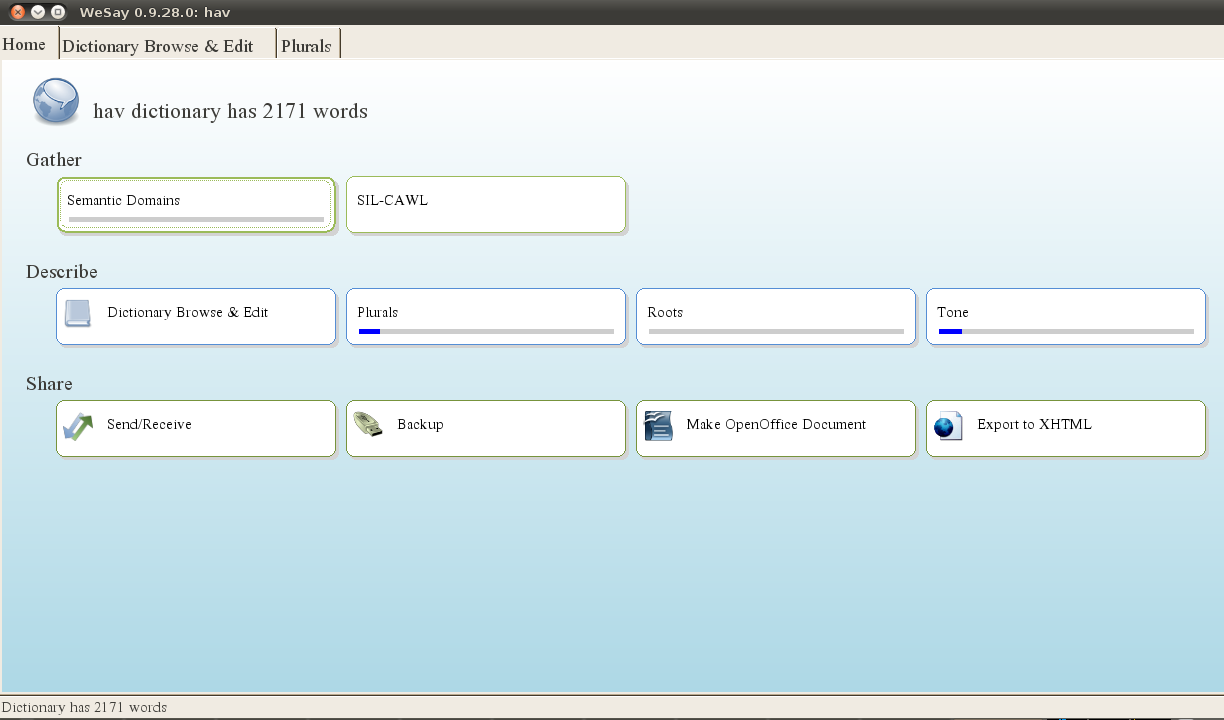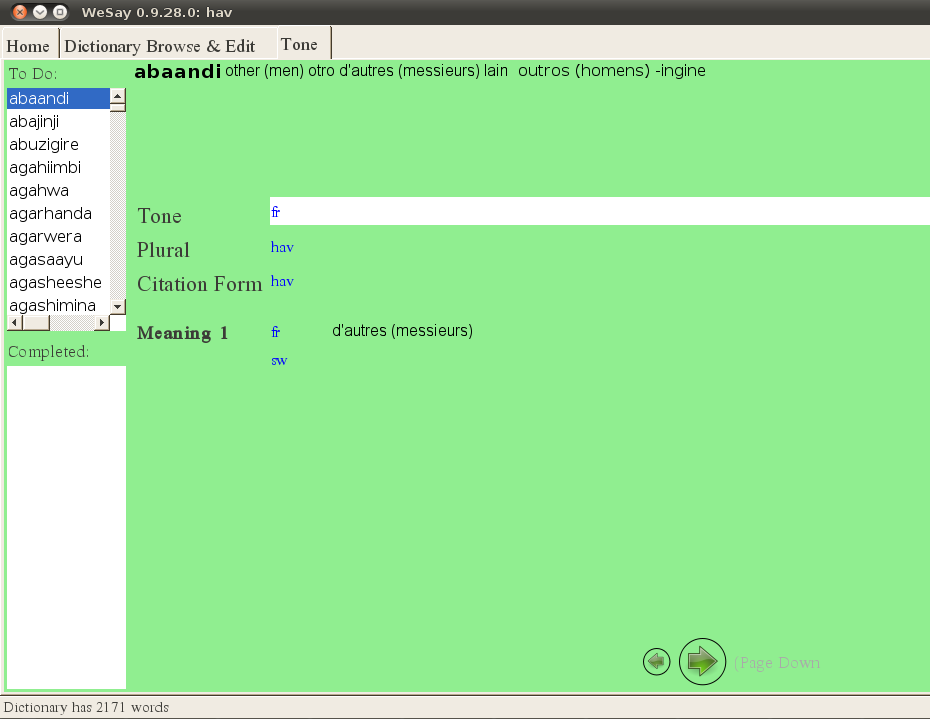Having found out how to configure and add new tasks in WeSay, I can now make some serious changes to my workflow (read: I can actually have people do some of their own data entry and parsing!)
The following task is a follow-up to the one presented here, where the root and meaning were visible but not editable, helping a non-linguist focus on adding plural forms to his dictionary –based on those visible but not editable fields. In this next task, the plural form forms a basis for parsing the root, so the plural and definition fields are visible but the only editable fields are root (EntryLexicalForm, default English label ‘Word’) and citation form. This allows the non-linguist to copy the form from the root field to the citation form field, and remove affixes from the root.
This task is slightly unideal in that it doesn’t know if a word has been parsed yet, or not. It checks for the presence of a citation field (which is usually only made in this kind of process), but it doesn’t know if, for instance, you have a mono-morphemic word which is pronounceable as is (i.e., standard lexicography practice would be to not have a citation field), and it would think that that word was still “to do.”
Here is my new root parser task:
<task
taskName=”AddMissingInfo”
visible=”true”>
<label>Roots</label>
<longLabel>Parse Roots</longLabel>
<description>Move citation info to Citation form field, leave roots in root field.</description>
<field>citation</field>
<showFields>EntryLexicalForm, citation</showFields>
<readOnly>Plural, definition</readOnly>
<writingSystemsToMatch />
<writingSystemsWhichAreRequired />
</task>
While I was at it, I made another task to help populate the “Tone” field. Too bad I can’t get WeSay and FLEx to agree on a writing system to restrict the characters here, so we’re likely to get a lot of malformed data here. But it should be a place to start. Anyway, here it is:
<task
taskName=”AddMissingInfo”
visible=”true”>
<label>Tone</label>
<longLabel>Add Tone Info</longLabel>
<description>Input tone information for each record.</description>
<field>Tone</field>
<showFields>Tone</showFields>
<readOnly>Plural, citation, definition</readOnly>
<writingSystemsToMatch />
<writingSystemsWhichAreRequired />
</task>
And the nice thing about tasks in WeSay, is that you can enable just the ones relevant to the task at hand, to simplify the UI. Which means that I can put all these in my new default project, and leave them disabled (<task taskName=”AddMissingInfo” visible=”false”>, or unticking them in the config) until we need them.
I’ve already shared my dream, but in the mean time, this gets us a lot closer do doing low-level language development in WeSay.


